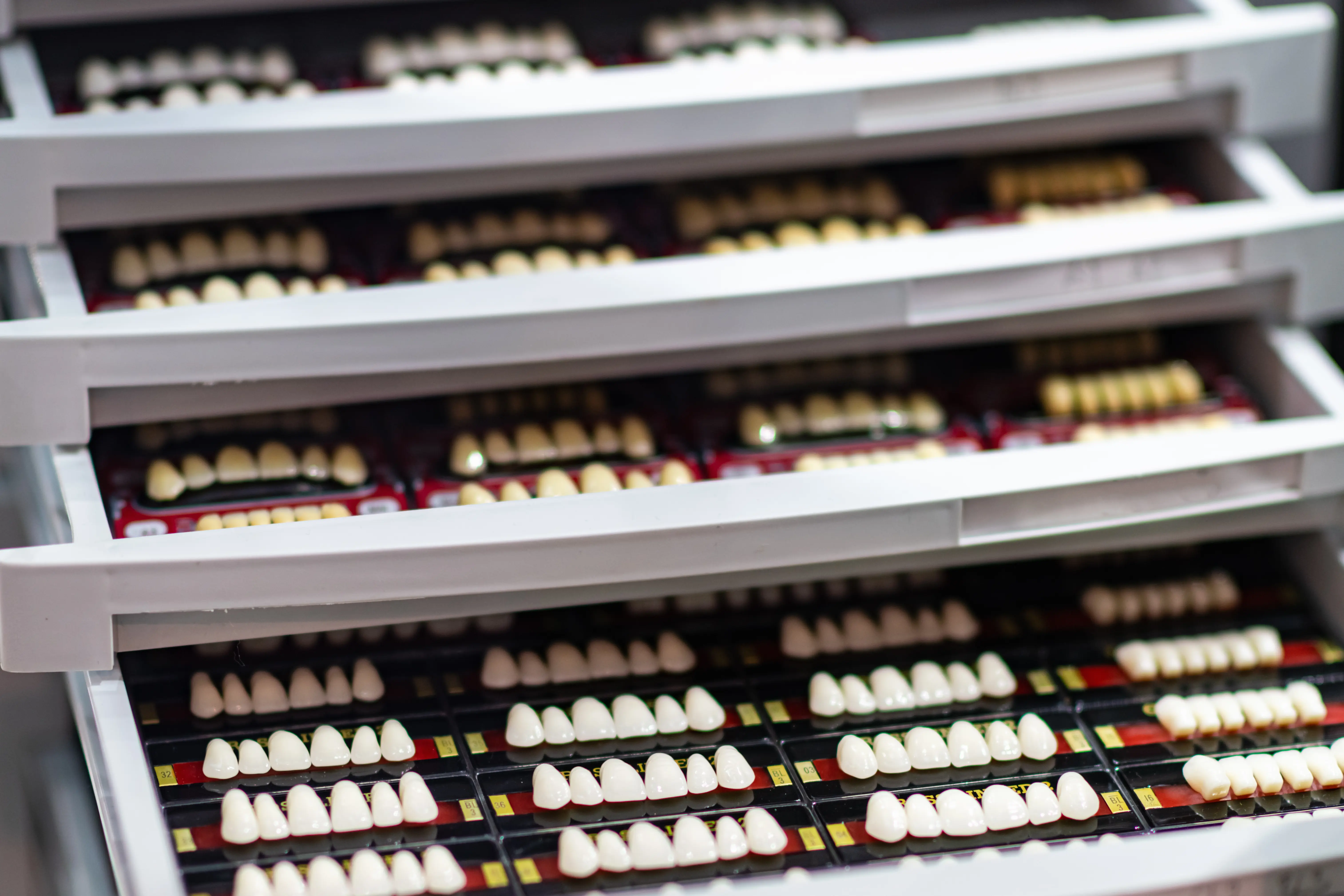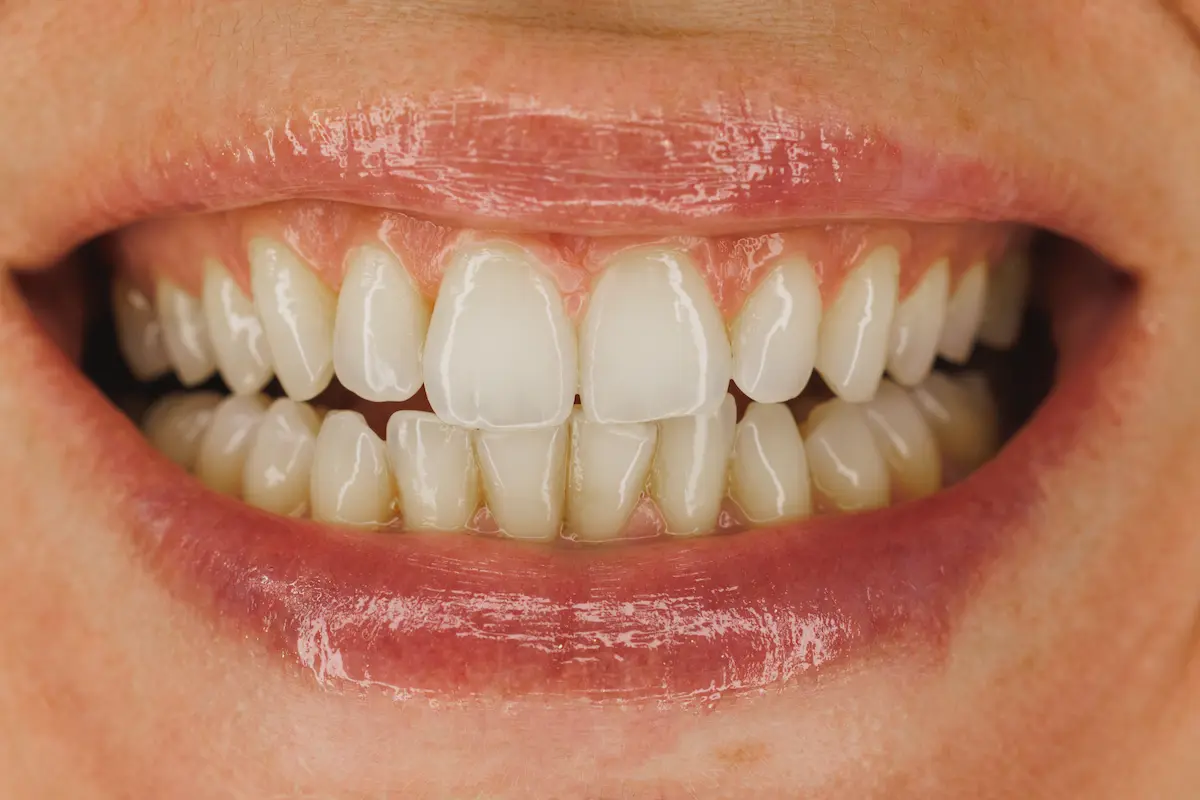Standing in front of the mirror, you notice that your front teeth have chips, stains, or gaps that make you hesitate to smile confidently. Your dentist mentions two options that could transform your smile, veneers or crowns. Both treatments promise beautiful results, but which one is right for your specific situation?
The choice between veneers and crowns represents one of the most common decisions in cosmetic dentistry. Both treatments can dramatically improve your smile's appearance, but they work differently and serve distinct purposes. Making the wrong choice could mean unnecessary tooth removal, higher costs, or treatments that don't last as long as they should.
This guide will help you understand exactly when each treatment is appropriate, what to expect from the procedures, and how to work with your dentist to make the best decision for your individual needs.
What Are Veneers and Crowns?
Dental veneers are thin, custom made shells that cover the front surface of teeth. Think of them as protective covers that hide imperfections while preserving most of your natural tooth structure. Veneers address cosmetic concerns like discoloration, minor chips, gaps, or slight misalignment.
Dental crowns are tooth shaped caps that cover the entire visible portion of a tooth above the gum line. They provide complete protection and restoration for teeth that have been damaged, decayed, or weakened. Crowns serve both cosmetic and functional purposes.
The key difference lies in coverage area and purpose. Veneers focus on appearance improvement with minimal tooth alteration, while crowns provide comprehensive restoration for damaged teeth.
Quick Decision Guide: Which Treatment Do You Need?
If you're dealing with healthy teeth that have cosmetic issues like staining, small chips, or minor gaps, veneers are likely your best option. They preserve more of your natural tooth structure and provide excellent aesthetic results.
However, if your teeth have extensive damage, large fillings, cracks, or you've had root canal treatment, crowns offer the protection and strength your teeth need. Crowns are also necessary if you're replacing missing teeth with a bridge.
The amount of existing tooth structure plays a crucial role in this decision. Teeth with significant damage or large fillings may not have enough healthy structure to support a veneer long term.

When to Choose Veneers
Veneers excel at addressing cosmetic concerns on healthy teeth with good structural integrity. Common situations include tooth discoloration that doesn't respond to whitening treatments, including tetracycline staining, fluorosis, or medication related discoloration.
Minor chips and cracks on front teeth can be effectively covered with veneers. The thin porcelain or composite material masks imperfections while maintaining a natural appearance. Gaps between teeth can be closed with veneers without requiring orthodontic treatment.
Worn tooth edges from grinding or natural wear can be restored with veneers. Slightly misaligned teeth that don't require full orthodontic treatment can appear straighter with carefully designed veneers. Size and shape irregularities can also be corrected to create a more balanced smile.
According to the American Academy of Cosmetic Dentistry, veneers are one of the most popular cosmetic treatments for smile makeovers. The Canadian Dental Association emphasizes the importance of choosing the right restoration based on individual dental needs rather than cosmetic preferences alone.
When to Choose Crowns
Crowns become necessary when teeth require structural restoration or protection beyond what veneers can provide. Extensive tooth damage from decay, trauma, or large existing fillings requires complete coverage. When more than half of the tooth structure is compromised, a crown provides better long term stability than a veneer.
After root canal treatment, teeth become brittle and need protection from fracture. Crowns provide the necessary strength to withstand normal chewing forces, especially for back teeth. Cracked or fractured teeth need complete coverage to prevent further damage.
Severe discoloration that extends throughout the tooth structure may require crown coverage for complete color correction. This includes teeth with internal staining or those that have darkened after root canal treatment.
Supporting dental bridges requires crowns on adjacent teeth to anchor the bridge securely. The National Institute of Dental and Craniofacial Research emphasizes that crowns are essential for preserving teeth that would otherwise require extraction.
Procedure Comparison
The veneer process begins with consultation and planning, including digital photographs, impressions, and color matching. Tooth preparation requires removing a thin layer of enamel (usually 0.5mm) from the front tooth surface. This minimal preparation preserves most of the natural tooth structure. Fabrication takes 1 to 2 weeks, followed by bonding with special adhesive.
Crown preparation requires more extensive tooth reshaping to create space for the crown. The dentist removes damaged structure and shapes the tooth to support the restoration. A temporary crown protects the prepared tooth during the 2 to 3 week fabrication period. Crown placement involves removing the temporary, checking fit and color, and permanently cementing the crown.

Cost Comparison and Insurance
Both treatments represent significant investments, with costs varying based on materials and complexity. Porcelain veneers typically range from $1,000 to $2,000 USD ($1,350 to $2,700 CAD) per tooth. Composite veneers offer a more budget friendly alternative at $300 to $800 USD ($400 to $1,080 CAD) per tooth.
Porcelain crowns generally cost between $800 to $1,800 USD ($1,080 to $2,430 CAD) per tooth. Zirconia crowns range from $1,000 to $2,000 USD ($1,350 to $2,700 CAD) per tooth. Gold crowns cost $1,200 to $2,500 USD ($1,620 to $3,375 CAD) per tooth but offer exceptional longevity.
Insurance coverage varies significantly between treatments. Most dental insurance plans cover crowns at 50 to 80% when medically necessary, while veneers are typically considered cosmetic and receive little to no coverage. Many dental offices offer financing options including payment plans, third party financing, or in house programs.
Durability and Maintenance
Porcelain veneers typically last 10 to 15 years with proper care, while composite veneers have shorter lifespans of 5 to 8 years. Crowns generally last longer than veneers, with most lasting 15 to 20 years or more. Gold crowns can last 30+ years, while porcelain and zirconia crowns typically last 15 to 20 years.
Both treatments require regular brushing with fluoride toothpaste and daily flossing. Bi annual dental visits allow for professional cleaning and early problem detection. Veneers require avoiding hard foods and habits like nail biting or ice chewing. Crowns need attention to gum line hygiene to prevent decay at the margins.
Research published in the Journal of Prosthetic Dentistry shows that proper maintenance significantly extends both veneer and crown lifespan. The American Dental Association provides comprehensive guidelines for maintaining dental restorations.
Key Differences: Side by Side Comparison
Veneers require minimal tooth preparation, removing only 0.5mm of enamel from the front surface, preserving most of your natural tooth structure. Crowns require more extensive preparation, removing 1 to 2mm of tooth structure from all surfaces. Veneers can potentially be removed and replaced, though this may require crown treatment if significant enamel was removed. Crown treatment is irreversible due to the extensive tooth preparation required.
Veneers provide excellent aesthetics but limited structural support, suitable for teeth with good underlying structure. Crowns provide maximum protection and can restore severely damaged teeth to full function. Both treatments typically require 2 to 3 visits over 2 to 3 weeks, though veneer treatment may be faster if no temporary restorations are needed.
Real World Decision Making
Sarah has deep grey staining from childhood tetracycline use. Her teeth are structurally sound but severely discolored. Professional whitening hasn't worked. Veneers are the ideal solution, providing complete color coverage while preserving healthy tooth structure.
Michael has old, large silver fillings in his front teeth that are starting to fail. The fillings take up more than half of each tooth's structure. Crowns are necessary because the remaining tooth structure isn't sufficient to support veneers long term.
Jennifer has small chips on her front teeth and a gap between her central incisors. Her teeth are otherwise healthy. Veneers can address both issues simultaneously, closing the gap and covering the chips while maintaining most of her natural tooth structure.
Making the Right Choice
Health assessment forms the foundation of treatment selection. Teeth with extensive damage, large fillings, or root canal treatment typically require crowns. Healthy teeth with cosmetic concerns are ideal candidates for veneers.
Aesthetic goals influence material selection and treatment approach. Patients seeking dramatic smile transformation may benefit from veneers, while those needing both function and appearance improvement often choose crowns. Budget considerations affect treatment planning, though both options have similar costs.
Lifestyle factors including diet, habits, and oral hygiene practices impact treatment success. Patients with bruxism may benefit from crown durability, while those with excellent oral hygiene may prefer veneer aesthetics.
Questions to Ask Your Dentist
When consulting with your dentist, ask these key questions: "How much healthy tooth structure do I have remaining?" This determines whether veneers are even possible or if crowns are necessary for structural support. "Am I a candidate for both treatments, or is one clearly better for my situation?" Sometimes the choice is obvious based on tooth condition.
"How long can I expect each treatment to last in my specific case?" Factors like teeth grinding, diet, and oral hygiene habits affect lifespan. "What special care will I need to follow to maximize the lifespan of my restoration?" Understanding maintenance requirements helps you choose the option that fits your lifestyle.
If you're considering cosmetic dental treatment, contact our dental team to discuss your options. We can evaluate your specific situation and recommend the best treatment for your needs. For patients in the Langley area interested in cosmetic dentistry, we offer comprehensive evaluations and personalized treatment plans.
Your Next Steps
The decision between veneers and crowns shouldn't be rushed. Take time to research your options, ask questions, and consider getting consultations from multiple dentists if you're unsure. Start by scheduling a consultation with a qualified cosmetic dentist who can evaluate your specific situation.
Consider your lifestyle and long term goals when making your decision. If you're young and want to preserve as much natural tooth structure as possible, veneers might be preferable. If you need structural support and maximum durability, crowns are likely the better choice.
Both veneers and crowns can dramatically improve your smile when chosen appropriately for your situation. The key is working with an experienced dentist who prioritizes your long term oral health while helping you achieve your aesthetic goals. Quality treatment planning and skilled execution deliver results that enhance your smile and boost your confidence for years to come.





